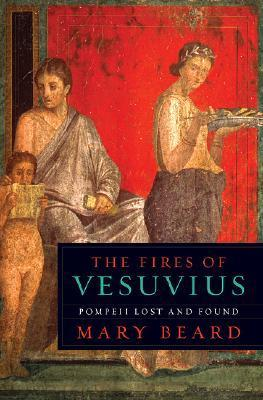The Fires of Vesuvius: Pompeii Lost and Found by Mary Beard
Summary (from the publisher): Pompeii is the most famous archaeological site in the world, visited by more than two million people each year. Yet it is also one of the most puzzling, with an intriguing and sometimes violent history, from the sixth century BCE to the present day. Destroyed by Vesuvius in 79 CE, the ruins of Pompeii offer the best evidence we have of life in the Roman Empire. But the eruptions are only part of the story. In The Fires of Vesuvius, acclaimed historian Mary Beard makes sense of the remains. She explores what kind of town it was―more like Calcutta or the Costa del Sol? ― and what it can tell us about “ordinary” life there. From sex to politics, food to religion, slavery to literacy, Beard offers us the big picture even as she takes us close enough to the past to smell the bad breath and see the intestinal tapeworms of the inhabitants of the lost city. She resurrects the Temple of Isis as a testament to ancient multiculturalism. At the Suburban Baths we go from communal bathing to hygiene to erotica. Recently, Pompeii has been a focus of pleasure and from Pink Floyd’s memorable rock concert to Primo Levi’s elegy on the victims. But Pompeii still does not give up its secrets quite as easily as it may seem. This book shows us how much more and less there is to Pompeii than a city frozen in time as it went about its business on 24 August 79.
Review: Destroyed by an eruption from Vesuvius in 79 CE, the ruins of the town of Pompeii remain frozen in time and thus offer excellent evidence of what life was like during the Roman Empire. In this history, Mary Beard details what ordinary life was like in Pompeii and covers topics such as diet, household structure, slavery, communal baths, gladiators, brothels, and more.
Like many, I've always been simultaneously horrified and fascinated by the remains of Pompeii and this novel certainly enters into this grim world that was frozen in its tracks: guard dogs who died struggling at the end of their tethers, children forever trapped in their mother's embrace, an open can of paint splattered across a wall, bread left in an oven for thousands of years as a result of the eruption. But after the morbid first glance at the deaths at the hands of the volcano, Mary Beard takes us behind the scenes at what the preservation of Pompeii allows us to now know about life as it would have been in the city.
I love history of the ordinary, so this book really appealed to me. Details such as how people used the rooms in their houses, ordinary diets, and typical dress are all very interesting to me and Mary Beard really delivers on this. There are also a lot of specific examples referenced throughout the text of items and details uncovered in the archaeological excavations of the city. I was surprised to learn that many fled Pompeii in the tremors during the days before the eruption and then went back to salvage what belongings they could.
I listened to this as an audio book, which perhaps was not the most ideal choice as I sometimes lost interest and focus in what was a very long text and I missed out on pictures I assume were likely included in the physical copy. The book did seem to drag at times, but Beard had many topics to include. But on the whole, I learned a lot about life in Pompeii.
Stars: 4



Comments
Post a Comment